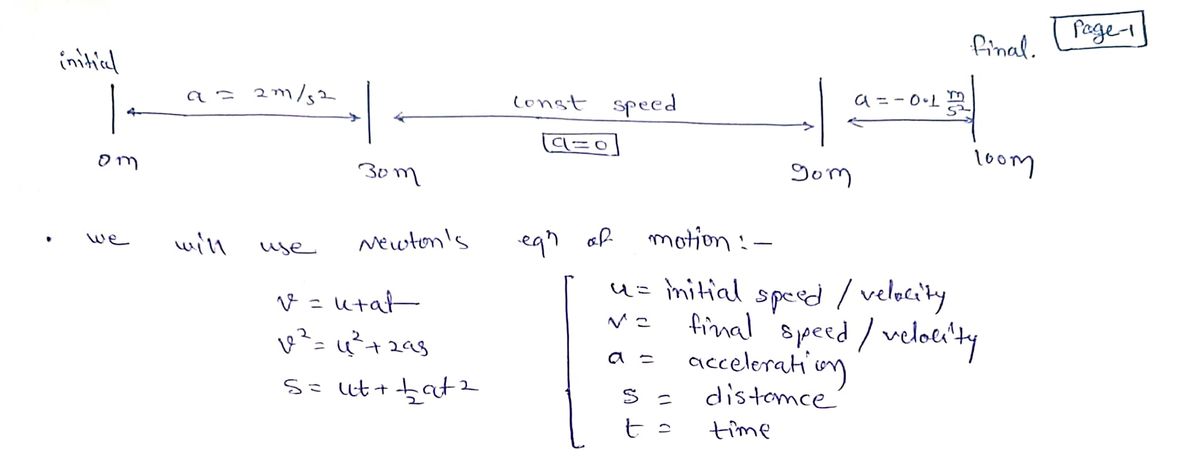A sprinter performs a 100 m dash. During the initial s30 = 30m he accelerates, obtaining an average acceleration a = 2 m/s2.After the first 30m he holds the velocity constant. Between the 90m mark and the finish line he has an average acceleration of af = -0.1 m/s2 a) What is his final velocity vf at the end of the first 30 meters? b) What is his total race time? c) What is his average velocity v for the 100 m dash?
Displacement, Velocity and Acceleration
In classical mechanics, kinematics deals with the motion of a particle. It deals only with the position, velocity, acceleration, and displacement of a particle. It has no concern about the source of motion.
Linear Displacement
The term "displacement" refers to when something shifts away from its original "location," and "linear" refers to a straight line. As a result, “Linear Displacement” can be described as the movement of an object in a straight line along a single axis, for example, from side to side or up and down. Non-contact sensors such as LVDTs and other linear location sensors can calculate linear displacement. Non-contact sensors such as LVDTs and other linear location sensors can calculate linear displacement. Linear displacement is usually measured in millimeters or inches and may be positive or negative.

Trending now
This is a popular solution!
Step by step
Solved in 3 steps with 3 images









